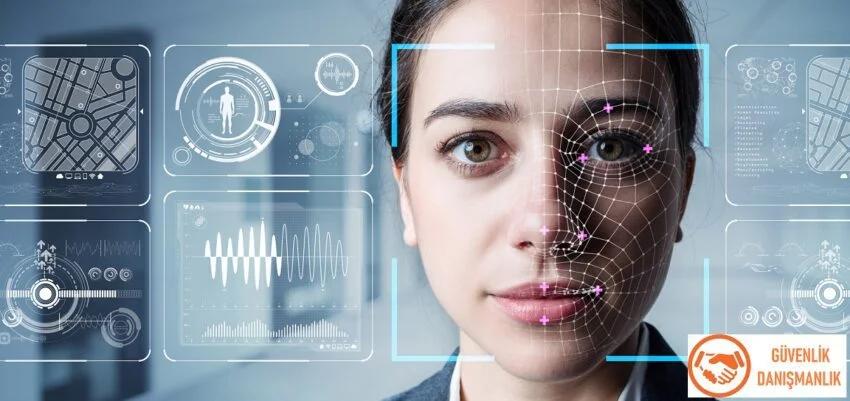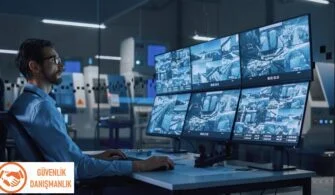Biyometric readers used in biometric systems are devices that read a person’s biological special differences instead of proximity or Mifare card readers. The use of these readers is quite common nowadays, and it is predicted that they will develop even further in the future. The detection logic of these readers is based on analyzing certain biological differences that are unique to each individual and using this analysis to identify people.
There are different types of biometric recognition systems available today. Fingerprint recognition systems are systems that recognize people’s fingerprints and grant them access based on that. There are also face recognition systems that analyze people’s faces and grant access based on their differences. Similarly, biometric systems that identify people based on the layout of their veins or palms, and systems that recognize the iris or retina in the eye are widely used in many projects today.
In recent years, biometric system readers have developed rapidly in line with advancing technology. Technological development has significantly reduced product costs, making biometric readers widely used today. Biometric system readers are heavily used in Personnel Attendance Control Systems (PACS). Even a few years ago, we did not recommend face recognition systems to our customers, but today they work with very high accuracy rates. Biometric readers are a technology that is likely to become the most important access control system of the future.

Some biometric system readers are used in places that require high security. For example, biometric readers such as vein recognition systems still have high costs and are generally used in areas where high security is important. Similarly, retina scanning systems, like vein recognition systems, are preferred in places that require very high security. Retina scanning (eye recognition) systems and vein recognition systems are also slow readers and are more difficult to use for normal passages.
A biometric system reader, which is a access control system, can work in integration with turnstile systems, like card access systems. Biometric system readers can work independently or can be connected as a wiagand with a card access system. Also, biometric readers have become multifunctional today. To be more specific, the same biometric reader can have fingerprint recognition, face recognition, password and card access capabilities.
Biometric readers are used in many areas such as personnel attendance control systems, turnstile systems, important security-requiring rooms, data center centers, etc.

Biometric system readers are devices that can perform identity verification processes using physical or behavioral characteristics of the human body. Thanks to these features, they are used in access control system applications.
Biometric readers provide a more secure option for identity verification in access control systems. Biometric features are unique to each individual, which means that there is less chance of fraud compared to other authentication methods. Biometric security readers and access control systems provide a more secure access control by eliminating the risk of losing or stealing a physical item such as a card or key.
Biometric security readers may have different features. There are different biometric readers such as fingerprint readers, facial recognition systems, retina scanning systems, hand geometry readers, vein scanning systems, and more. These systems can be selected according to different application areas to provide the most suitable access control solution.
Biometric readers and access control systems can be used in workplaces, offices, hotels, banks, hospitals, schools, airports, stadiums, and many other places.
Biometric system readers perform identity verification processes using physical or behavioral characteristics of the human body, such as fingerprints, facial recognition, iris scanning, vein recognition, hand geometry, body temperature, heart rate, voice recognition, and more.

Biometric security system readers are used especially in places where high security is required for access control systems. For example, they are used in military facilities, airports, banks, research laboratories, hospitals, data centers, nuclear power plants, government buildings, and similar places.
Biometric readers are more reliable than other identification methods to authenticate users’ identities. However, the cost of these readers may be higher than other identification methods. Also, the use of some biometric security system readers has been restricted, especially during the pandemic period, to prevent the spread of infectious diseases.
Access control systems that use biometric security readers provide higher security, making identification processes faster and more reliable. These systems authenticate the user’s identity by using biometric data such as fingerprints, facial recognition, retina scanning, and voice recognition.
The use of such systems eliminates problems such as losing or copying keys and prevents unauthorized access. In addition, businesses can track employee attendance and working hours more easily through biometric readers. By allowing only specific people to enter certain areas, they also increase security.
Access control systems that use biometric security readers can be applied to many different access points such as security walls, doors, turnstiles, or barriers. However, the cost of these systems may be higher than other access control systems, and installation may require specialized technical expertise.





